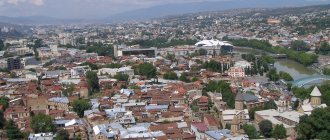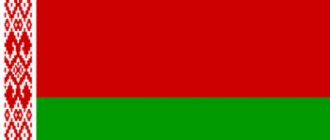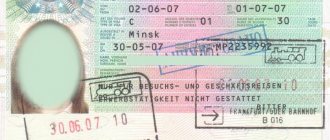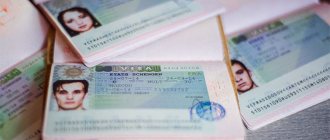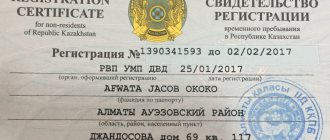Schengen visa and Schengen zone
The Schengen Agreement is where 26 European countries have agreed that there will be no border controls when traveling between them. And they will issue a joint permit that is valid in the territory of all countries included in the agreement. This is a single Schengen visa , which is valid in the territory of the so-called Schengen zone .
A Schengen visa, obtained in any Schengen country, gives the tourist the right to free movement throughout all countries of the Schengen zone, which includes: Austria, Belgium, Hungary, Germany, Greece, Denmark, Iceland, Italy, Spain, Latvia, Lithuania, Liechtenstein, Luxembourg , Malta, the Netherlands, Norway, Portugal, Poland, Slovenia, Slovakia, Finland, France, Czech Republic, Sweden, Switzerland, Estonia.
In addition, the holder of this visa can freely visit countries that have not formally signed the agreement, but are de facto participants: Monaco, San Marino, Vatican City and Andorra.
Schengen countries
Also, with a valid Schengen visa, it is possible to visit the following countries without applying for a national visa: Albania, Bulgaria, Gibraltar, Republic of Cyprus, Romania, Sint Maarten, Croatia.
With what status is it better to travel within the European Union and Schengen?
Share:
“European Union”, “Schengen zone” - these concepts are often used as synonyms. People believe that the EU and Schengen mean approximately the same thing, that is, the Schengen countries are also part of the EU, which means that movement between these countries is free if you have a permit document (residence permit, permanent residence permit or passport). However, it is not. In the article we will explain in detail why you should not confuse the concepts of Schengen and the EU, as well as how to choose the European country that suits you to obtain a residence permit, which will allow you to get visa-free access to the maximum number of countries in Europe.
This article will be useful to those who are going to obtain a residence permit, permanent residence or passport in a European country and ensure freedom of movement for themselves and their family. After reading you will learn:
- What is the difference between the European Union and the Schengen area?
- What opportunities does a residence permit provide in a Schengen country?
- where can you travel with a residence permit of a country that is only part of the EU
- how to travel with a residence permit of a country that is neither a member of the EU nor Schengen
- why EU citizenship opens up the world's borders to travel.

EU and Schengen zone: understanding the concepts
The European Union is a union of European countries on economic and political principles. As of the end of 2021, 28 European countries . Initially, the union was created to ensure the free movement of capital and people and the effective integration of the European space.
It was in connection with the need to facilitate the movement of citizens across the countries of the union that the Schengen Agreement was concluded, which was later transformed into Schengen legislation. Thus, the Schengen zone, or Schengen, is the territory of 26 European countries , where border and passport control has been abolished and the unhindered movement of people across the border is ensured.
What's the difference then? Not all EU countries have decided to join the Schengen Agreement . also states that are not members of the EU, but are part of the Schengen area.
Thus, within Schengen you can travel freely from country to country, and it does not matter whether the state is a member of the European Union or not. For example, Switzerland is not a member of the EU, but is part of the Schengen area. Citizens, residents of other Schengen countries, as well as Schengen visa holders are free to travel to Switzerland.
At the same time, for example, Cyprus is a member of the European Union, but is not a member of the Schengen Agreement. Holders of a Cypriot residence permit cannot freely visit Schengen, for this they will need to apply for a visa.
On the other hand, it is quite easy to get from the Schengen zone countries to the EU states that are not part of it . Example: with an Italian residence permit card you can come to Cyprus without applying for a visa.
It is also important to remember that there are countries that have a special border control regime . These are Great Britain and Ireland - to come here, holders of a residence permit from a Schengen country will still need to apply for a visa. The exception is citizens of the European Union, read about them further in the article.
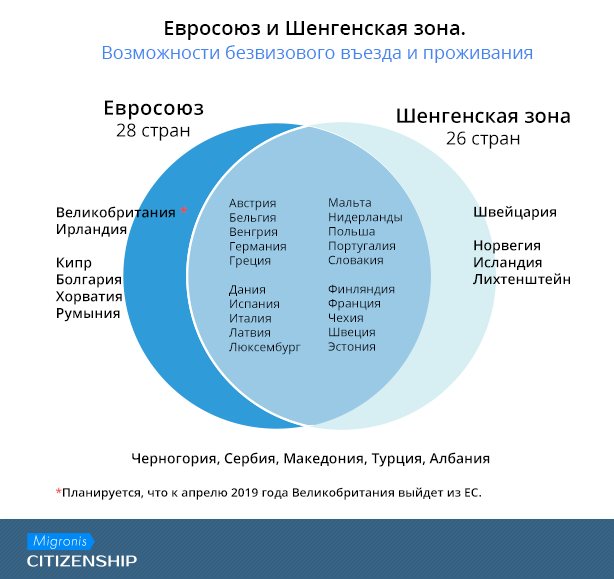
Residence permit in the Schengen country
Some of the most popular countries where foreigners obtain permanent or temporary residence permits (permanent residence permits, residence permits, respectively), including residence permits for investments, are Spain, Portugal, Latvia, Greece and Malta. All of them are included in Schengen, which means that all countries of the Schengen zone are open to holders of residence permit cards for free visits . The maximum period of stay is 90 days per six months, and you can live in the country that issued the residence permit all year round.
A residence permit for investment in real estate differs from a regular residence permit in that the registration process is much faster, it is automatically extended if the conditions of the program are met, and with such a residence permit you can live in the country for any number of days without fear of losing your status, even if the number is zero.
Is a residence permit in a Schengen country suitable for travelers? Definitely yes . The Schengen area covers most of Europe. Points that are also worth paying attention to:
- Having received a residence permit in a Schengen state, you will not be able to travel to Ireland or the UK without a visa. Visas are issued separately;
- With such a residence permit you can visit EU member countries that are not part of the Schengen area: Cyprus, Romania, etc.;
- Residence permits and permanent residence in the European Union can be obtained in exchange for investments. This option is worth paying attention to businessmen and wealthy people who need high mobility when traveling abroad.
Residence permit in an EU-only country
Six European countries, while members of the EU, are not part of the Schengen area: Cyprus, Croatia, Great Britain, Ireland, Bulgaria, Romania.
Cyprus is of particular interest, since there are very favorable conditions for obtaining a residence permit for Russian-speaking citizens - both in general and for investments. In practice, having received Cyprus residence permit/permanent residence cards, their holders are surprised to discover that free entry into other EU countries is denied to them. However, with a Cyprus residence permit, obtaining a Schengen visa is very simple, and the procedure takes no more than one week.
The situation is similar with the other countries mentioned. For example, a UK residence permit obtained for investment in the economy (starts from 2 million pounds) also does not allow entry into Schengen without a visa.
Key points to remember:
- A residence permit in EU member countries that are not members of the Schengen Agreement does not allow entry into Schengen without a visa;
- The Cyprus residence permit, popular among investors, does not give the right to visa-free visits to Schengen countries, but with it you can easily obtain a Schengen visa within a week;
- The length of stay depends on the type of visa and is usually 90 days every six months.
Residence permit in a country that is not a member of the EU or Schengen
European countries that are not part of the EU and Schengen: Serbia, Montenegro, Turkey, Macedonia, Albania. With a residence permit from these countries, you cannot visit the EU and the Schengen area without visas obtained in advance . Despite the European localization, residents of these countries are not given the opportunity to obtain a Schengen visa under a simplified scheme; as a rule, documents are submitted in the general manner.
Montenegro provides the opportunity to obtain a residence permit through investment on favorable terms, however, until this country joins the European Union (planned for 2022), such a residence permit does not give the right to move around the EU and Schengen countries without visas.

EU citizenship – complete freedom to travel throughout Europe and the world
By receiving a passport of any EU country, you become an EU citizen and have full right not only to travel without visas, but also to reside in any country of the Union . Whether this or that country is included in Schengen or not no longer matters.
The only condition applies to those who intend to reside abroad in another EU country for more than 90 days in a six-month period . You must register your place of residence by submitting a special notification form to the migration authorities. By the way, in Switzerland, which is not a member of the European Union, the same rules apply: when moving from EU countries, a person must notify the cantonal migration service of his place of residence within two weeks.
What to expect from the UK? The country's exit from the European Union is scheduled for 2021, but it is assumed that the general procedure in this regard will not be changed, and, like Switzerland, EU citizens will be able to freely travel to and stay in Britain .
Travel options are especially relevant for those who are planning to apply for a passport for investment in Europe. The most popular Citizenship by Investment programs currently operate in Cyprus and Malta. In Cyprus, a passport can be obtained in less than six months, and the investment threshold is about EUR 2 million. According to the terms of Malta’s official program, investing in the country’s economy will require about 800 thousand EUR, but the procedure usually takes 12-14 months.
Both Malta and Cyprus are members of the EU, so with a passport from these countries you can travel to all EU countries without visas . Moreover, this status opens the borders of over 150 countries , and Maltese citizenship allows you to visit the United States without a visa.
It is worth noting that citizens of Montenegro received the right to travel to Schengen without obtaining visas in December 2009. Thus, citizens of EU member countries not included in the Schengen area have ample opportunities to visit the Schengen territory.
So, let's summarize. What travel opportunities does EU citizenship provide?
- complete freedom of movement within the EU countries, no visas required;
- the opportunity to live in any EU state;
- visa-free travel to more than 150 jurisdictions around the world, including Canada, Australia, Japan, Singapore, all of South America, etc.
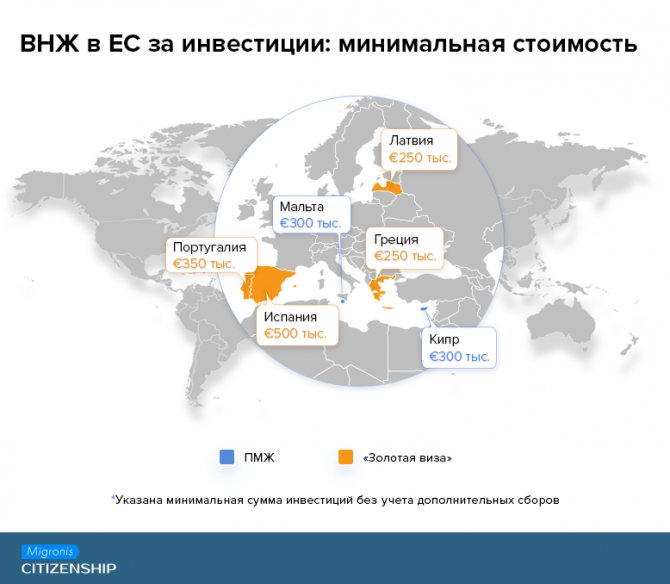
Why else do you need a residence permit, permanent residence, or citizenship in Europe?
In addition to the almost limitless opportunities that open up for travelers, migration status in the EU can become a guarantee of a safe and prosperous life, economic stability for business, decent employment, etc. Contact specialists in the migration field - they will help you choose the right status, taking into account your wishes and capabilities.
Kristina Ruzhilo - immigration expert, managing partner
Types of Schengen visa
A Schengen visa can be of several categories. The most popular and in demand is the category C visa ; it can be called a tourist visa. In addition to tourism, it is also issued for purposes such as treatment (medical), participation in sporting events, short-term business trips (work) and visiting relatives and friends (guest).
It is worth noting that transit categories A and B have been abolished, and from April 5, 2010, visas of category C are also issued for transit. The national visa category D is issued to persons who are allowed to study, work or reside permanently in a Schengen country.
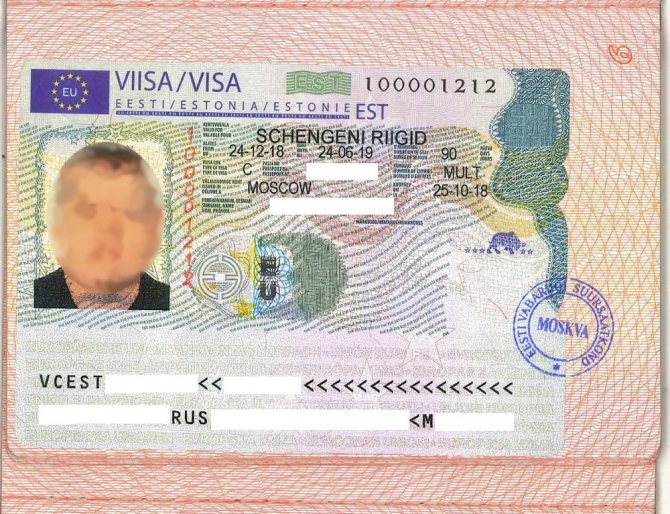
New design of Schengen visa
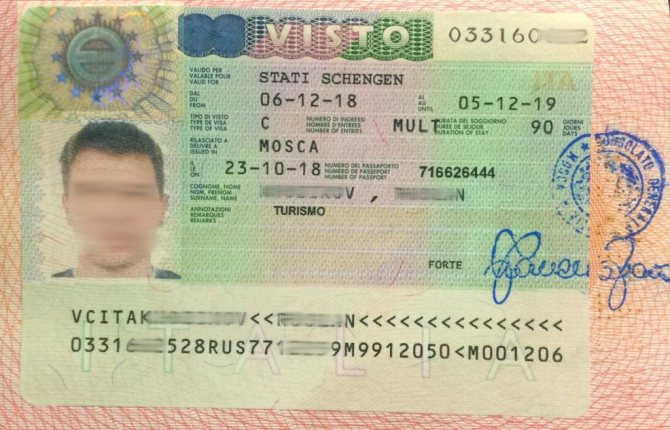
Old Schengen visa design
The scope of application of a Schengen visa varies significantly depending on the following parameters: the validity of the visa, the number of permitted days of stay and the number of entries.
Validity
The validity period of the visa is determined by the date range:
- Start date - starting from 00 hours 00 minutes of the specified date, you have the right to enter the Schengen zone.
- Expiry date - after 23:59 on this date, the visa is no longer valid, and you are required to leave the Schengen zone before this time.
Typical expiration dates:
- Strictly for travel dates;
- For half a year;
- For one, two, three and four years;
- Five years is the maximum possible validity period of a Schengen visa.
Period of stay
A category C visa is a permit to stay in the Schengen area for a certain period of time within the validity period. Possible options for days of stay:
- Strictly the number of days of travel;
- 30, 45, 60 days;
- 90 days is the maximum possible stay for a category C visa.
It is important to note that it is not the total number of days for the entire validity period of the visa that is indicated, but the number of days allowed to stay in the Schengen countries every 180 calendar days.
Thus, if a visa has been issued with a long-term validity of more than six months (from 180 days), for example, for a year and 30 days allowed to stay, then you have the right to stay in the Schengen zone for no more than 30 days every six months (180 days).
Number of entries
Regardless of the validity period and length of stay, a Schengen visa can be issued for a different number of permitted entries :
- A single-entry visa allows the holder to enter a Schengen country once. After departure, the visa will expire, even if it was issued for a longer period of time.
- A double-entry visa allows you to enter any Schengen country without any problems, leave the Schengen area and re-enter. The visa will expire after the second departure.
- Multiple entry visa , multivisa, MULT or affectionately “multik” allows the holder to visit the Schengen zone an unlimited number of times within the validity period.
Refusal to obtain a work visa to Poland
If the applicant is rejected, you can make an appeal against the country that made the decision.
A request for another review of the work application should be made a week in advance. Try to get a Polish work visa again. But if the second decision is also negative, you can no longer challenge it, the result is final.
To prevent this from happening, it is better to turn to professionals. Collecting documents and completing them correctly is a painstaking task with numerous nuances. The Open Europe company will help you get a category D visa to Poland the first time. Specialists always approach each application individually to ensure that a Polish work visa is obtained.
Rules for issuing Schengen visas in 2021
The validity period and period of stay of the issued visa in each specific case depends on the following factors:
- How accurately and completely did you provide information about the purpose of the visit?
- History of visiting both the Schengen zone and travel to other countries.
- Consul's mood.
Each application for a Schengen visa is analyzed individually, and it is possible to issue either a “longer” visa or a “shorter” one for similar conditions of applicants.
There are standard practices for issuing a Schengen visa for the first time:
- Strictly for travel dates, going abroad for the first time is the most common option.
- A six-month visa with a period of stay of 30 days, if you have a lot of stamps from other countries in your passport.
- An annual multiple visa for 90 days of stay is the best option for the first Schengen if you have a lot of travel and the consul was in a really good mood.
Currently, the consulate of each country has, if not rules for issuing long-term visas, then regularities: first they issue them for a short period, then for a year and only then for two, three or even five years, depending on the history of use of the previous ones.
In 2021, the European Union adopted new rules for issuing Schengen visas, which came into force in January 2021 . The new Regulations concern the conditions for issuing long-term multiple visas, which are now strictly regulated for all countries.
- In order to obtain an annual visa , you must first have three Schengen visas within two years.
- To get a two-year multiple visa, you need to have at least one annual visa .
- To get a five-year one two-year visa in the last three years .
The rules have become a little stricter, but it has become clearer what kind of visa you can count on if you have a certain visa history.
One of the really good innovations from June 6, 2021, it is worth noting that from January 2021 you can submit a visa application six months before your trip , and not 3 months, as before.
The visa fee in 2021 for Russian citizens is 35 Euro. For residents of Kazakhstan and Kyrgyzstan, from January 2021 the fee is 80 Euro.
The amount of the fee depends only on the citizenship of the person filing the documents, and not on the place of filing. For example, if a citizen of the Russian Federation submits documents in Kazakhstan, then a visa fee of 35 Euros is applied, and if a citizen of Kazakhstan submits documents in Russia, then the fee will be 80 Euros.
Where to start designing
The main document without which the consul will not consider the application is an official invitation to cooperate . The employer himself must provide it to the applicant, having first filled out a special form and registered it with the voivodeship office (the one where the foreign employee will work).

Sample invitation
The invitation states:
- All company details;
- Personal and contact details of the employee, information from the passport;
- Purpose of the invitation;
- The date the invitation was written;
- Duration of the agreement or contract;
- Financial information;
The invitation must be certified by the seal of the inviting organization.
It turns out that the first thing that needs to be done is to find a free vacancy and a potential employer who will be willing to spend his own money and time on issuing an invitation.
Where to apply for a Schengen visa
Recently, many “visa centers”, “first visa centers” and so on have opened up. Let's figure out who issues the Schengen visa, and who is an unnecessary and even harmful intermediary.
Firstly, only the Consulate (or the consular section of the Embassy) has the right to issue visas. It is the consul who reviews your application, who makes the decision on issuance and puts his signature on the sticker in your passport. There may be several consulates in a country, and each has its own consular district: countries and/or cities whose residents this consulate receives.
Secondly, there are accredited visa service centers . It is important to understand that an accredited visa service center is an official representative of the consulate and has the right to carry out some of the visa processing, namely: consultation on preparing documents and filling out an application form, collecting and transferring (forwarding) documents and collecting biometrics (fingerprints).
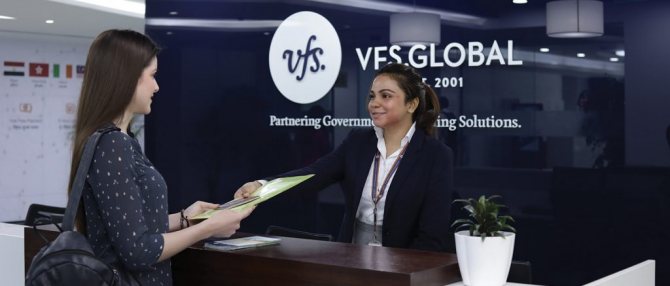
Each country can have only one accredited visa service center; it is usually listed in the information on the consulate/embassy website. The visa center service fee is set by the consulate and cannot be more or less than what is approved. The integration of the official visa service center and the country’s consulate is so close that, for example, registration at the Spanish consulate takes place on the visa center’s website.
All! This concludes the options for where to apply for a Schengen visa!
Other organizations are intermediaries that serve no purpose other than making the service more expensive for you! They can be separate companies or exist within the framework of a travel agency and be called whatever you like: “visa visa center”, “first visa center” - it doesn’t matter, these are intermediaries, since only the consulate has the right to issue Schengen visas and only an accredited visa service center has the rights collect documents and fingerprints.
There is not a single adequate argument to contact an intermediary to obtain a Schengen visa. The intermediary is not authorized to handle the registration, but he can make a mistake in your documents and extend the receipt period by several days without any problems. And the most interesting thing is that you will still have to visit an accredited visa service center or consulate to take biometrics. Bingo!
Consulate or accredited visa service center
Choosing a place to submit documents is quite simple. Consulates are usually represented only in a few cities, and if your city has a consulate of the desired country, then it will be cheaper to contact it.
Attention: some consulates do not process visas, but completely delegate these responsibilities to visa service centers.
If there is no consulate in the city, then the choice falls on an accredited visa service center, fortunately they are represented almost everywhere. The additional visa center fee is usually much less than the cost of traveling to the city with the Consulate.
Sometimes there are situations when it is advisable to contact a visa center, even if there is a consulate in the city. For example, when at the height of the season, an appointment at the Consulate takes only six months, but at the visa center you can submit documents within a few days.
STEPS OF OBTAINING A VISA:
- Fill out the application, provide a copy of your passport and pay.
- The next day in Poland we submit documents for the preparation of a work permit
- Manufacturing takes 3 weeks (six-monthly) and 2 months (annual), depending on the requested permit period and the workload of the Ministry
- We receive the original invitation in Poland, send a photo of it and send it via standard delivery service to Moscow. Delivery takes 3 weeks. Expedited delivery is possible in 2-3 working days. days by DHL service - additional cost is 3,500 rubles.
- We sign up for application at the Polish visa center in Moscow, St. Petersburg, Kaliningrad and Novosibirsk. As new cities open, it is possible to apply to any Polish visa center in Russia, but there are additional nuances (check with managers)
- We are preparing a package of documents for applying for a visa. You must have with you for submission: 2 photos, copies of pages of both passports with marks, medical insurance for the entire duration of the visa (you can order from us, the cost of the policy is from 3,000 rubles to 8,000 rubles, depending on the list of coverage of insured events), payment consular and service fees 95 euros (payable at the CC upon submission), original invitation from Poland
- Submit in person to the Poland visa center. Can only be submitted in Moscow and Kaliningrad
- The processing time for an application by the Consulate is from 7 to 14 days. In practice, the processing usually lasts 10 calendar days (depending on the workload of the Consulate)
- You pick up your passport with a visa and you can go to Europe.
In total, in 4-5 weeks it is possible to obtain a work visa D to Poland
Documents for a Schengen visa
Although the Schengen visa is uniform and subject to the general regulations of the European Union, the set of documents may differ slightly from country to country. The main difference lies in whether bookings of accommodation without payment are suitable, in what language a printout of airline tickets must be provided and the type of bank statement - these points are not spelled out in the general requirements, so different consulates interpret them slightly differently.
The general recommendation for collecting documents is relevant for all countries: when the consul examines your documents, he should not have questions for which he cannot find answers in the documents provided .
- The duration of your visit to the Schengen zone must coincide with the period of your booked stay. It should not be the case that tickets are for 2 weeks, but the hotel is booked only for 3 days. Where are you going to live the rest of the time? Booking.com will help you find and book suitable accommodation.
- Internal movements should also preferably be covered by documents: if you are going to stay in different cities, then you must provide plane/bus/train reservations between these cities (convenient to buy on Omio).
- Insurance for the entire duration of the trip is required when submitting documents. Check your cards, perhaps insurance is already provided by the bank or can be issued at low rates; if not, then you can choose the optimal insurance on the Cherehapa and Instore.Travel services.
- And a tip that many people don’t know about: if you are planning a really difficult trip that tickets and reservations do not cover, for example, a hiking trip, then you have the right to provide a cover letter with a set of documents. Describe your planned route and other travel details in free form.
Schengen visa application form
It is important to understand that the Schengen visa application form is not a test or verification. A questionnaire is a standardized form where you describe the purpose of your visit. There are no right or wrong answers. You just need to accurately and completely describe why you need an entry permit.
Here are some basic recommendations for filling out the form:
- Don't lie or make it as believable as possible.
- Check that the names of places of work and place of residence in the application form and the set of documents match.
- Check that the dates in the application form match the dates in the documents.
Selecting a country to apply for a Schengen visa
According to the rules, you are required to apply for a visa to the country that is the main purpose of your visit. This should be understood as the country in which you plan to spend more days if you plan to visit several countries.
It is important that it does not exist and, moreover, has never existed. Someone came up with it, and the rest, for some unknown reason, reprinted it, and away we go...
Let's consider several cases of choosing a country for submitting documents:
- Let's say you are planning to visit Italy, and only Italy is the easiest option, you need to apply for a Schengen visa from Italy.
- If your trip covers several countries, for example, France, Germany and the Czech Republic, then the country in which you will spend a total of more days . If it so happens that the days of stay are equal, then you have the right to choose any country.
There are situations when it is more convenient to submit documents to a certain country, be it a shorter queue for receiving, the proximity of a visa center or a simple package of documents - then it makes sense when planning a trip to make sure that the desired country has at least one more day of stay, and with a clear conscience, submit documents to the representative office of this country.
Approximate cost and time frame for obtaining a national visa
The minimum period for reviewing a package of documents for issuing a national visa is 30 days. In some cases, the process drags on for up to 1.5 or even several months. This depends on your specific situation, the correctness of the data you provided and the workload of the consular service in a given period of time.
If errors are identified, paperwork may take at least one month. In some cases, the entire procedure can take up to 90-120 days.
This is why documents should be submitted in advance. Experts do not recommend rushing to buy tickets, sell property, or quit your job, since the risk of refusal to issue a visa or the need to complete additional paperwork is very high.
When submitting your application, you will be required to provide a receipt confirming your payment of the consular fee. On average it is 60 € for adults and 30 € for minors.
You can always find out the exact cost on the official website of the consular service of the country you plan to enter.
Keep in mind that a visa fee will be charged each time, even if you submit documents a second or third time, correcting errors or providing additional paperwork. At the same time, the consulate’s website lists categories of citizens who are exempt from paying the consular fee or may qualify for preferential rates for services.
As a rule, these include:
- children under 6 years of age;
- students of secondary/higher educational institutions;
- pensioners;
- persons who have confirmed blood relationship with foreigners living in the Schengen area;
- disabled people and veterans;
- employees of state and municipal authorities;
- citizens taking part in humanitarian missions, international movements and programs;
- athletes, including team coaches, for the purpose of participating in competitions or training camps;
- media workers.
Additional costs include the services of a translator, notary, and intermediary companies.
The visa center fee is approximately 18.5 €. The cost of collecting biometric data is 1.5 €. If you decide to neglect cooperation with specialists, the consideration of your application may be significantly delayed.
In addition, you should keep in mind that an increased consular fee will be charged for urgent processing of documents. The total cost of a national visa, for example, to Italy in 2021 is about 116 €.
Location of consulates and names of visa centers
| A country | Consulate | Visa Center | |
| Austria | Moscow St. Petersburg Nizhny Novgorod Ekaterinburg Nur-Sultan Almaty | VFS Global | Obtaining a visa to Austria |
| Belgium | Moscow St. Petersburg Nur-Sultan Almaty | TLScontact | Obtaining a visa to Belgium |
| Hungary | Moscow St. Petersburg Nizhny Novgorod Ekaterinburg Kazan Chelyabinsk Nur-Sultan Almaty | VFS Global | Obtaining a Hungary visa |
| Germany | Moscow St. Petersburg Ekaterinburg Novosibirsk Kaliningrad Nur-Sultan Almaty Bishkek | VisaMetric | Obtaining a visa to Germany |
| Greece | Moscow St. Petersburg Novorossiysk Nur-Sultan Almaty | Global Visa Center World | Obtaining a visa to Greece |
| Denmark | Moscow, Saint Petersburg | VFS Global | Obtaining a visa to Denmark |
| Iceland | Moscow, Saint Petersburg | VFS Global | Obtaining a visa to Iceland |
| Italy | Moscow St. Petersburg Ekaterinburg Volgograd Kaliningrad Krasnodar Lipetsk Samara Chelyabinsk Nur-Sultan | Italy VMS | Obtaining a visa to Italy |
| Spain | Moscow St. Petersburg Ekaterinburg Nur-Sultan Almaty | BLS International | Obtaining a visa to Spain |
| Latvia | Moscow St. Petersburg Kaliningrad Nur-Sultan Almaty | Pony Express | Obtaining a visa to Latvia |
| Lithuania | Moscow St. Petersburg Kaliningrad Irkutsk Nur-Sultan Almaty | VFS Global | Obtaining a visa to Lithuania |
| Liechtenstein | — | — | Visa issues are resolved through the Swiss representative office. |
| Luxembourg | Moscow St. Petersburg Ekaterinburg Cherepovets Magnitogorsk | Consular Section of the Luxembourg Embassy in Moscow | Obtaining a visa to Luxembourg |
| Malta | Moscow, Saint Petersburg | VFS Global | Obtaining a visa to Malta |
| Netherlands | Moscow St. Petersburg Yuzhno-Sakhalinsk Nur-Sultan | VFS Global | Obtaining a visa to the Netherlands |
| Norway | Moscow St. Petersburg Arkhangelsk Murmansk Nur-Sultan Almaty | VFS Global | Obtaining a visa to Norway |
| Portugal | Moscow | VFS Global | Obtaining a visa to Portugal |
| Poland | Moscow St. Petersburg Irkutsk Kaliningrad Nur-Sultan Almaty | VFS Global | Obtaining a visa to Poland |
| Slovenia | Moscow, Saint Petersburg | VFS Global | Obtaining a visa to Slovenia |
| Slovakia | Moscow St. Petersburg Astrakhan Vladivostok Perm Krasnoyarsk Omsk Nur-Sultan Karaganda | VFS Global | Obtaining a visa to Slovakia |
| Finland | Moscow St. Petersburg Nur-Sultan Karaganda | VFS Global | Obtaining a visa to Finland |
| France | Moscow St. Petersburg Ekaterinburg Nur-Sultan Almaty Bishkek | VFS Global | Obtaining a visa to France |
| Czech | Moscow St. Petersburg Ekaterinburg Nizhny Novgorod Nur-Sultan Almaty | VFS Global | Obtaining a visa to the Czech Republic |
| Sweden | Moscow St. Petersburg Nur-Sultan Almaty | VFS Global | Obtaining a visa to Sweden |
| Switzerland | Moscow St. Petersburg Nur-Sultan Almaty Bishkek | TLScontact | Obtaining a visa to Switzerland |
| Estonia | Moscow St. Petersburg Pskov | VFS Global | Obtaining a visa to Estonia |


